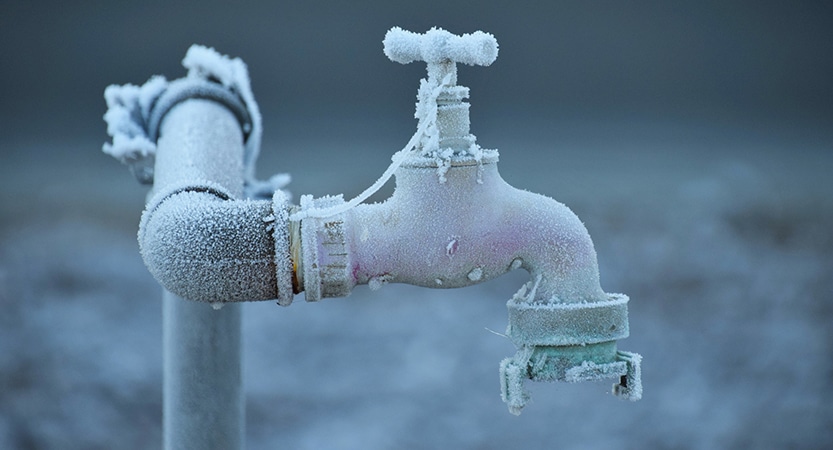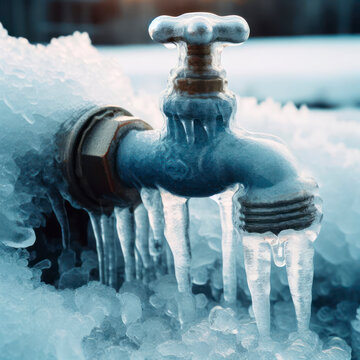How to Protect Pipes from Cold Weather: Professional Advice
How to Protect Pipes from Cold Weather: Professional Advice
Blog Article
The publisher is making a few good pointers regarding How to prepare your home plumbing for winter weather as a whole in this content further down.

Cold weather can wreak havoc on your plumbing, specifically by freezing pipelines. Below's just how to avoid it from taking place and what to do if it does.
Introduction
As temperature levels decline, the danger of icy pipes boosts, possibly causing expensive repairs and water damage. Comprehending exactly how to avoid icy pipelines is essential for house owners in cool environments.
Avoidance Tips
Shielding prone pipelines
Wrap pipelines in insulation sleeves or utilize warmth tape to protect them from freezing temperatures. Focus on pipes in unheated or exterior areas of the home.
Home heating methods
Keep indoor spaces properly warmed, particularly locations with plumbing. Open up closet doors to enable cozy air to circulate around pipes under sinks.
Just how to identify icy pipelines
Search for reduced water circulation from faucets, unusual odors or sounds from pipelines, and visible frost on exposed pipes.
Long-Term Solutions
Architectural changes
Consider rerouting pipes away from outside walls or unheated areas. Include additional insulation to attics, basements, and crawl spaces.
Updating insulation
Purchase premium insulation for pipes, attic rooms, and wall surfaces. Proper insulation aids preserve consistent temperatures and lowers the risk of frozen pipelines.
Protecting Outside Pipes
Garden hose pipes and exterior taps
Disconnect and drain pipes garden hoses before winter months. Set up frost-proof spigots or cover outside faucets with shielded caps.
Understanding Frozen Pipes
What causes pipes to ice up?
Pipelines ice up when subjected to temperature levels below 32 ° F (0 ° C) for prolonged periods. As water inside the pipes ices up, it increases, putting pressure on the pipeline wall surfaces and possibly triggering them to burst.
Threats and damages
Icy pipes can bring about water interruptions, home damages, and expensive fixings. Burst pipes can flood homes and cause comprehensive structural damages.
Indicators of Frozen Piping
Determining frozen pipes early can stop them from breaking.
What to Do If Your Pipelines Freeze
Immediate activities to take
If you presume icy pipes, keep faucets open up to relieve stress as the ice thaws. Utilize a hairdryer or towels soaked in warm water to thaw pipes gradually.
Conclusion
Protecting against frozen pipelines needs aggressive measures and quick feedbacks. By understanding the reasons, indicators, and preventive measures, house owners can protect their plumbing throughout winter.
5 Ways to Prevent Frozen Pipes
Drain Outdoor Faucets and Disconnect Hoses
First, close the shut-off valve that controls the flow of water in the pipe to your outdoor faucet. Then, head outside to disconnect and drain your hose and open the outdoor faucet to allow the water to completely drain out of the line. Turn off the faucet when done. Finally, head back to the shut-off valve and drain the remaining water inside the pipe into a bucket or container. Additionally, if you have a home irrigation system, you should consider hiring an expert to clear the system of water each year.
Insulate Pipes
One of the best and most cost-effective methods for preventing frozen water pipes is to wrap your pipes with insulation. This is especially important for areas in your home that aren’t exposed to heat, such as an attic. We suggest using foam sleeves, which can typically be found at your local hardware store.
Keep Heat Running at 65
Your pipes are located inside your walls, and the temperature there is much colder than the rest of the house. To prevent your pipes from freezing, The Insurance Information Institute suggests that you keep your home heated to at least 65 degrees, even when traveling. You may want to invest in smart devices that can keep an eye on the temperature in your home while you’re away.
Leave Water Dripping
Moving water — even a small trickle — can prevent ice from forming inside your pipes. When freezing temps are imminent, start a drip of water from all faucets that serve exposed pipes. Leaving a few faucets running will also help relieve pressure inside the pipes and help prevent a rupture if the water inside freezes.
Open Cupboard Doors
Warm your kitchen and bathroom pipes by opening cupboards and vanities. You should also leave your interior doors ajar to help warm air circulate evenly throughout your home.

Do you like reading about How to prepare your home plumbing for winter weather? Write a remark below. We'd be delighted to know your thinking about this write-up. Hoping that you visit us again later on. If you liked our article plz consider to share it. We enjoy reading our article about How To Avoid Freezing Pipes.
Automated Marketing Report this page